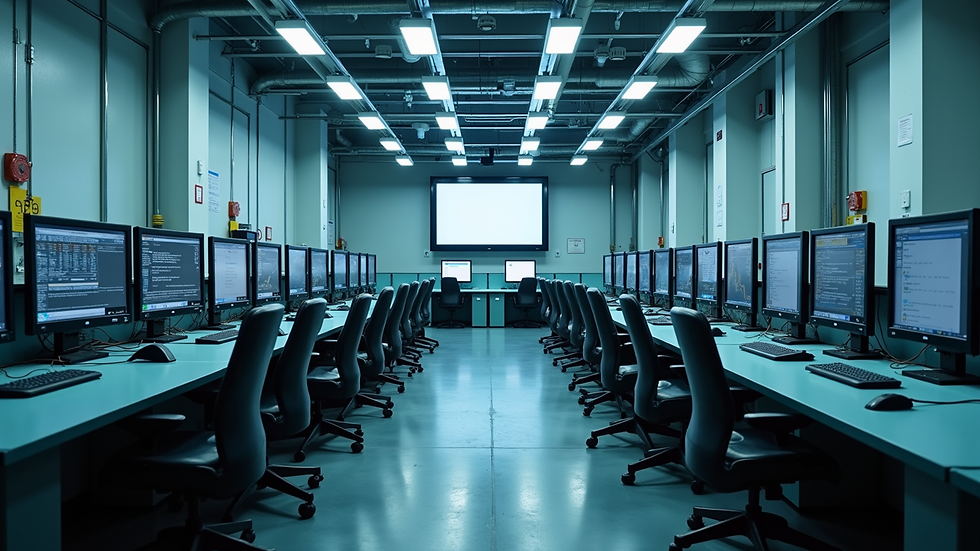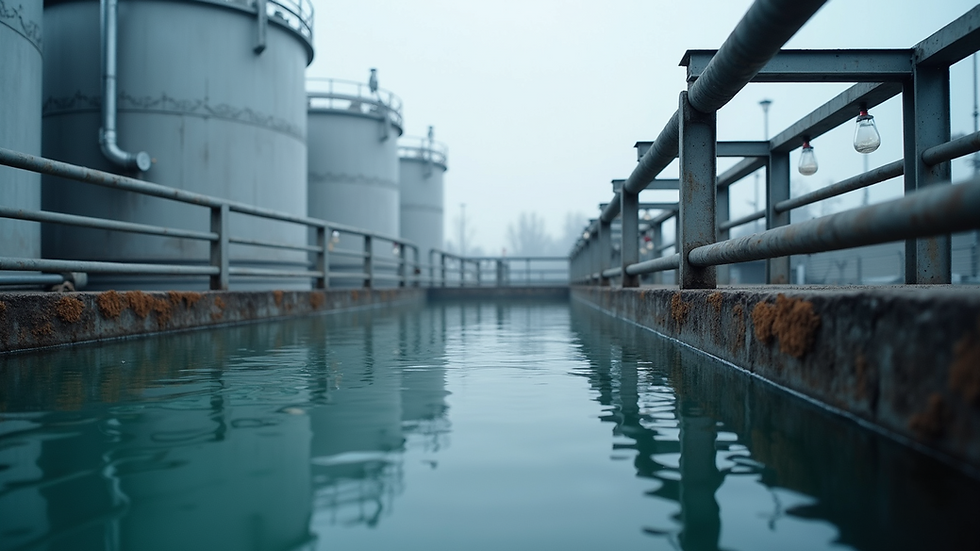Efficient Solutions for Industrial Wastewater Challenges
- palwinder kaur
- Aug 22
- 4 min read
Industrial water treatment is a critical aspect of modern manufacturing and production processes. As industries grow and evolve, the volume and complexity of wastewater generated also increase. Efficiently managing this wastewater is essential to protect the environment, comply with regulations, and reduce operational costs. This article explores practical and effective solutions for tackling industrial wastewater challenges, offering insights into treatment methods, technologies, and best practices.
Understanding Industrial Water Treatment and Its Importance
Industrial water treatment involves the processes used to clean and purify water that has been contaminated during industrial activities. This water often contains harmful chemicals, heavy metals, organic compounds, and suspended solids that can pose serious environmental and health risks if discharged untreated.
Proper treatment of industrial wastewater helps industries:
Meet environmental regulations: Compliance with local and international standards is mandatory to avoid penalties.
Protect ecosystems: Preventing pollution safeguards aquatic life and natural habitats.
Conserve water resources: Treated water can be reused, reducing freshwater consumption.
Improve operational efficiency: Reducing contaminants can enhance equipment lifespan and reduce maintenance costs.
For example, a textile factory may use large amounts of water for dyeing fabrics, resulting in wastewater rich in dyes and chemicals. Treating this water before discharge or reuse is crucial to prevent water pollution and conserve resources.

Key Industrial Water Treatment Technologies
Several technologies are employed to treat industrial wastewater, each suited to different types of contaminants and treatment goals. Understanding these technologies helps industries select the most efficient and cost-effective solutions.
Physical Treatment Methods
Physical methods remove suspended solids and floating materials through processes such as:
Screening: Removes large debris like plastics and rags.
Sedimentation: Allows heavy particles to settle at the bottom of tanks.
Filtration: Uses sand, membranes, or other media to trap smaller particles.
These methods are often the first step in treatment, preparing the water for further chemical or biological processes.
Chemical Treatment Methods
Chemical treatments involve adding substances to neutralize or remove contaminants:
Coagulation and flocculation: Chemicals cause fine particles to clump together for easier removal.
pH adjustment: Balances acidity or alkalinity to safe levels.
Oxidation: Breaks down organic pollutants using oxidizing agents like chlorine or ozone.
Chemical treatments are effective for removing dissolved substances and disinfecting water.
Biological Treatment Methods
Biological processes use microorganisms to degrade organic pollutants:
Activated sludge systems: Aerobic bacteria consume organic matter in aeration tanks.
Anaerobic digestion: Microbes break down waste in oxygen-free environments, producing biogas.
Biofilters and bioreactors: Support microbial growth on surfaces to treat wastewater.
These methods are sustainable and cost-effective for treating biodegradable waste.

What are the three types of industrial wastewater treatment?
Industrial wastewater treatment can be broadly categorized into three types based on the treatment objectives and methods used:
Primary Treatment
This initial stage focuses on removing large solids and suspended particles through physical processes like screening and sedimentation. It prepares the wastewater for more advanced treatment.
Secondary Treatment
This stage targets the removal of dissolved and suspended organic matter using biological processes such as activated sludge or biofilters. It significantly reduces biochemical oxygen demand (BOD) and suspended solids.
Tertiary Treatment
The final stage involves advanced treatment methods to remove remaining contaminants, including nutrients (nitrogen and phosphorus), heavy metals, and pathogens. Techniques include chemical precipitation, filtration, and disinfection.
Each type plays a vital role in ensuring that industrial wastewater is treated to meet discharge or reuse standards.
Practical Recommendations for Effective Industrial Wastewater Management
Implementing efficient wastewater treatment requires a strategic approach tailored to the specific industry and wastewater characteristics. Here are actionable recommendations:
Conduct thorough wastewater characterization: Analyze the composition and volume of wastewater to select appropriate treatment methods.
Invest in modular and scalable treatment systems: These allow flexibility to adapt to changing production volumes and regulations.
Implement real-time monitoring: Use sensors and automation to track water quality and system performance, enabling prompt adjustments.
Promote water reuse and recycling: Treat wastewater to a quality suitable for reuse in processes like cooling, cleaning, or irrigation.
Train staff regularly: Ensure operators understand treatment processes and maintenance requirements to avoid system failures.
Collaborate with experts: Partner with specialized companies for design, installation, and maintenance of treatment systems.
For instance, a chemical manufacturing plant might install a combination of sedimentation tanks, activated sludge reactors, and UV disinfection units to handle its complex wastewater stream effectively.

The Role of Advanced Technologies in Industrial Water Treatment
Emerging technologies are revolutionizing industrial water treatment by enhancing efficiency, reducing costs, and minimizing environmental impact. Some notable advancements include:
Membrane filtration: Technologies like reverse osmosis and ultrafiltration provide high-quality water by removing dissolved solids and microorganisms.
Electrochemical treatment: Uses electric currents to degrade pollutants and recover valuable metals.
Nanotechnology: Nanomaterials improve contaminant removal and sensor sensitivity.
Artificial intelligence (AI) and machine learning: Optimize treatment processes through predictive analytics and automated control.
Adopting these technologies can help industries stay ahead of regulatory requirements and sustainability goals.
Embracing Sustainable Industrial Wastewater Management Practices
Sustainability is becoming a core focus in industrial water treatment. Companies are adopting practices that reduce water consumption, minimize waste, and lower energy use. Some strategies include:
Zero liquid discharge (ZLD): Treating and recycling all wastewater to eliminate discharge.
Green chemistry: Using less toxic materials and processes to reduce wastewater contamination.
Energy recovery: Capturing biogas from anaerobic digestion to generate power.
Water footprint assessment: Measuring and managing water use across the supply chain.
Integrating these practices not only benefits the environment but also enhances corporate reputation and operational resilience.
For industries seeking comprehensive solutions, partnering with experts in industrial wastewater management can provide tailored systems and ongoing support.
Moving Forward with Industrial Water Treatment Solutions
Addressing industrial wastewater challenges requires a combination of proven technologies, strategic planning, and continuous improvement. By understanding the types of treatment, investing in advanced methods, and embracing sustainability, industries can achieve efficient water management that supports both business and environmental goals.
Implementing these solutions will help industries reduce their environmental footprint, comply with regulations, and optimize resource use, paving the way for a cleaner and more sustainable future.



Comments